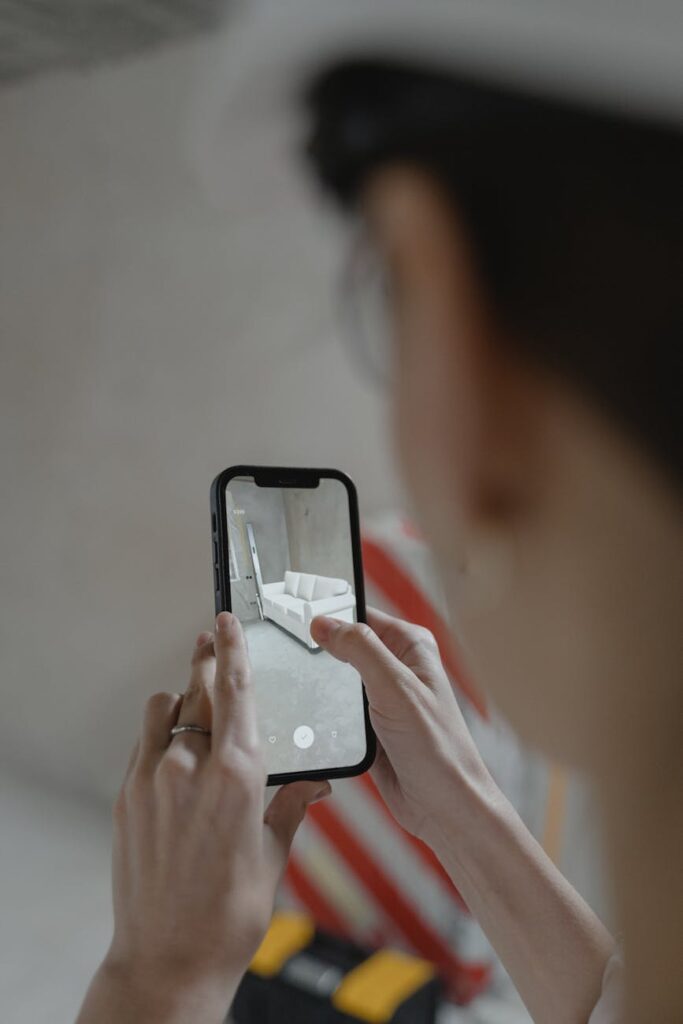Unlocking Your Retirement with Crypto: The Self-Directed IRA Playbook
Let’s be honest. You’ve heard the stories. The wild price swings of Bitcoin, the meteoric rise of altcoins, and the constant buzz around blockchain technology. Maybe you’ve even dabbled, buying a little crypto on an exchange. But have you ever seriously considered it as part of your long-term retirement strategy? For most people, the answer is a hard no. Their 401(k) and traditional IRAs are locked into stocks, bonds, and mutual funds. But what if there was a way to bring these two worlds together? There is, and it involves a powerful but often misunderstood tool: Self-Directed IRAs.
Using Self-Directed IRAs to invest in assets like cryptocurrency isn’t just a niche strategy for the ultra-wealthy anymore. It’s becoming a legitimate path for savvy investors looking to diversify beyond Wall Street’s usual offerings. It gives you the keys to your own retirement kingdom, allowing you to invest in what you know and believe in. But with great power comes great responsibility—and a whole lot of questions. How does it work? Is it safe? What about the taxes? We’re going to break it all down, step by step.
So, What Exactly Is a Self-Directed IRA?
Think of your typical IRA as a restaurant with a set menu. You can pick from the dishes they offer—stocks, bonds, mutual funds—and that’s it. A Self-Directed IRA (SDIRA), on the other hand, is like having your own private chef and a fully stocked kitchen. You call the shots. You’re not limited to the public market.
An SDIRA is a special type of Individual Retirement Account that allows you to hold a much broader range of investments than a standard IRA. While a conventional IRA custodian (like Fidelity or Vanguard) restricts you to publicly traded securities, an SDIRA custodian allows for alternative assets. We’re talking about things like:
- Real estate (rental properties, flips)
- Private equity and startups
- Precious metals (gold, silver)
- And, of course, cryptocurrency
The core rules regarding contributions, distributions, and tax advantages are the same as a regular IRA (Traditional or Roth). The defining difference is the freedom of choice. You are the investment manager. This freedom is both its greatest strength and its most significant challenge.
Why Put Crypto in a Retirement Account? The Lure of Tax-Free Growth
Okay, so you can buy crypto in an SDIRA. But why would you want to? If you buy Bitcoin on Coinbase and it skyrockets, you cash out and pay your taxes. Simple, right? Well, those taxes can take a massive bite out of your profits.
When you trade crypto on a regular exchange, every profitable trade is a taxable event. If you hold for less than a year, you’re hit with short-term capital gains taxes, which are taxed at your ordinary income rate. Ouch. Hold for longer than a year, and you pay long-term capital gains, which are lower but still significant. This constant tax drag can seriously erode your returns over time.

This is where the IRA wrapper becomes a superhero for your portfolio. By holding and trading crypto within a Self-Directed IRA, you can eliminate that tax drag entirely.
- In a Traditional SDIRA: Your investments grow tax-deferred. You don’t pay any capital gains tax on your trades inside the account. You only pay income tax when you take distributions in retirement.
- In a Roth SDIRA: This is the holy grail for many crypto investors. Your investments grow completely tax-free. As long as you follow the rules, you will never pay a single dime in taxes on your gains when you withdraw them in retirement. Imagine turning a $5,000 investment into $500,000 and paying zero tax on it. That’s the power of a Roth.
The ability to capture 100% of your cryptocurrency gains without the constant friction of capital gains tax is the single most compelling reason to consider a crypto IRA.
How It Works: A Step-by-Step Guide to Your Crypto IRA
Setting up a crypto IRA is more involved than opening a Robinhood account, but it’s a straightforward process if you break it down. You can’t just link your existing Coinbase account to your Fidelity IRA. It doesn’t work that way. You need a specialized structure.
- Choose a Specialized SDIRA Custodian: This is the most important step. You need to find a financial institution that acts as a custodian or trustee for SDIRAs and specifically supports cryptocurrency investments. These companies handle the administrative and reporting requirements to keep your IRA compliant with IRS rules. They don’t give investment advice; they just hold the assets and execute your directions.
- Open and Fund Your Account: You’ll open a new SDIRA account with your chosen custodian. Then, you need to fund it. You can’t just deposit cash from your bank account (beyond your annual contribution limit). The most common methods are:
- Rollover: Move funds from an existing 401(k), 403(b), or other employer-sponsored plan.
- Transfer: Move funds from another IRA (Traditional or Roth) directly to your new SDIRA custodian.
- Contribution: Make your annual IRA contribution directly to the SDIRA, subject to IRS limits.
- Direct Your Investment: Once your account is funded with US dollars, you direct the custodian to make the purchase. Many modern crypto IRA platforms have integrated exchanges, making this part look and feel very similar to using a standard crypto exchange. You tell them, “Buy X amount of Bitcoin at the market price,” and they execute the trade on your behalf. The crypto is then held in secure custody under the name of your IRA.
- Manage and Hold: The cryptocurrency now lives inside your tax-advantaged retirement account. You can buy, sell, or trade different coins within the IRA without triggering taxable events. The value of your IRA simply goes up or down with the market.
The Elephant in the Room: Massive Risks and Critical Considerations
Let’s pump the brakes for a second. Investing in cryptocurrency is not for the faint of heart. Putting it in your retirement account raises the stakes even higher. You absolutely must understand the risks before you dive in. This is not a get-rich-quick scheme; it’s a high-risk, high-reward strategic allocation within a long-term plan.
Key Risks to Understand
- Extreme Volatility: This is the most obvious one. Cryptocurrency prices can swing 20%, 30%, or even more in a single day. You must be prepared to see the value of your retirement funds drop dramatically and not panic-sell. This is not the place for money you’ll need in the next five years.
- Custodial Risk: Unlike stocks, which are held in a highly regulated system, crypto custody is a newer field. You are trusting your custodian to securely store your private keys. A hack or failure on their part could be catastrophic. This is why due diligence on your custodian is non-negotiable. Look for companies that use qualified, insured cold storage solutions.
- Regulatory Uncertainty: The rules around cryptocurrency are still being written. Governments around the world are figuring out how to approach it. A future law or regulation could dramatically impact the value or legality of certain assets. This is a fluid environment.
- Higher Fees: SDIRA custodians and crypto IRA platforms typically charge higher fees than traditional brokerages. These can include setup fees, annual account fees, and trading fees. Make sure you understand the complete fee schedule, as it can eat into your returns over time.

Choosing the Right SDIRA Platform for Your Crypto
Your choice of custodian or platform is paramount. Don’t just pick the one with the flashiest ads. Dig deeper and evaluate them on these key criteria:
- Security: This is #1. How do they store the assets? Do they use multi-signature wallets? Is the majority held in offline cold storage? Do they have insurance against theft or hacks? Ask these questions directly.
- Fees: Get a clear, written schedule of all fees. This includes account setup fees, annual maintenance fees, trading commissions, and any other potential charges. Compare a few different providers.
- Asset Selection: Do they only offer Bitcoin and Ethereum, or do they have a wide range of altcoins you’re interested in? Make sure their offerings align with your investment thesis.
- Ease of Use: Is the platform intuitive? Can you easily execute trades and view your portfolio? Some platforms are slick and modern, while others are a bit clunky. A good user experience matters.
- Customer Support: When you have a problem with your retirement funds, you want to be able to reach a knowledgeable human being. Check reviews and see what other customers say about their support team.
A Final Word on Prohibited Transactions
One critical IRS rule to understand with SDIRAs is the concept of “prohibited transactions.” Essentially, you cannot engage in any transaction that directly benefits you or a “disqualified person” (like a close family member) before retirement. For crypto, this means you can’t transfer crypto you already own personally into your IRA. You must fund the IRA with cash and then purchase the crypto within the account. You also can’t use the crypto in your IRA for personal use, like buying a coffee. Breaking these rules can result in your entire IRA being deemed distributed, leading to massive taxes and penalties. Stay squeaky clean.
Conclusion
Using Self-Directed IRAs to add cryptocurrency to your retirement portfolio is a cutting-edge strategy that offers incredible potential, primarily through its powerful tax advantages. The ability to grow wealth in a volatile, high-growth asset class without the constant drag of capital gains tax is a game-changer. However, it is undeniably a high-risk endeavor. It demands a ton of personal research, a strong stomach for volatility, and a very long-term perspective.
This isn’t an all-or-nothing proposition. For most people, a small allocation—perhaps 1% to 5% of their total retirement portfolio—is a more prudent approach. It gives you exposure to the upside while ensuring that a crypto winter won’t derail your entire retirement plan. Do your homework, choose a reputable partner, and understand that you are taking the wheel of your financial future. It’s an exciting, and potentially very rewarding, journey.


